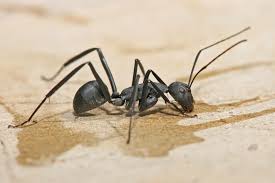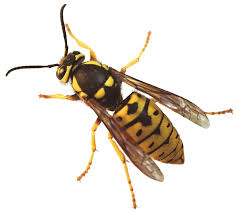
CARPENTER ANTS have a segmented body (three parts). The carpenter ant chews wood or wood based products. They are considered excavators, because they do not actually eat wood, but remove it so they can nest in the wood.
Typically, they begin outside, and will enter homes and buildings through various methods. For example, access points can include windows, cable lines, and under siding, just to name a few. After entering buildings, they prefer nesting in dead and/or damp wood. Or by rolex pearlmaster replica
Carpenter ants can and do follow pheromone trails to and from a home. Untreated carpenter ants will set up “satellite colonies” in the home, which often results in damage to the structure.
Treatment for carpenter ant control:
A) Exterior foundation treatments will not only kill many of the insects, but will also help prevent the carpenter ants from trailing back into the home.
B) Exterior baits are also used to eliminate carpenter ants in areas that are common nesting sites, such as trees, fence posts, and wood piles.
C) Interior applications are used in areas where the carpenter ants are found, or are suspected to be. They are also applied where the ants have left wood frass, or wood shavings, behind.
Please call our office for more details- 330-499-2063.

FLEAS are a wingless insect, about 1/8 inches long. Fleas can jump approximately twelve inches. The flea has tube-like mouth parts, that enable them to feed on their hosts. An adult flea will feed on the blood of a mammal before the flea reproduces. Fleas usually lay their eggs on host animals or in upholstered furniture, or carpeting, where animals sleep.
Treatment for flea control:
A) Treatment should begin after the pet has been treated by a veterinarian, or with a proper flea treatment.
B) The home, or building, also needs to be treated by a pest control professional. A minimum of two applications are recommended.
C) There are certain preparations a homeowner needs to do to prepare for treatment. Aid Pest Control will gladly go over these with you.
Please call our office for more details- 330-499-2063.

COCKROACHES are insects that are typically associated with filth and unkempt environments. These insects are often transported from one location to another via cartons, cardboard, or a variety of other ways.
Roaches are known to carry viruses, and commonly leave fecal matter in areas of food preparation, and in kitchen cupboards.
Roaches have developed an immunity to many insecticides, and are a hardy insect. They have a high reproduction rate and travel within buildings easily. (From one apartment to another, for example).
Treatment for roach control:
A) Treatment varies, depending on the structure (single or multi-family buildings, residential homes or commercial property), and the conditions.
B) Typically, a combination of baits and insecticides, which include residuals and growth regulators, are effective. Multiple visits are usually needed to ensure success.
C) Customer preparation and co-operation is vital to obtaining control of roach infestations. Please call our office for more details- 330-499-2063.

TERMITES live in colonies in the soil. They feed on dead plant material, mostly wood and wood components. Sometimes, termites are found by homeowners. They may be in the form of a swarming, black insect, which resembles an ant, within the home. Another example of a termite problem is to find “worker” termite tubes in the home, which indicates an active termite infestation, causing damage to the home.
Treatments for Termites:
Termite treatment methods vary. One effective control method is baiting. This is designed to eliminate the colony by delivering a solid bait matrix through ground canisters to foraging termites. These worker termites thus share the bait with ground colonies, which will eliminate the termite colony over time.
Another option for termite treatments are soil applications. Termiticides are pumped into active termite locations and also around ground foundation walls, to eliminate termite colonies.
Please call our office for more details- 330-499-2063.

Generally, stinging insects form nests and have a caste system. Where nests are formed can, unfortunately, lead to conflict with humans. These insects are very defensive and aggressive in protecting their “turf”.
Treatment for Yellow Jackets and other stinging insects:
90% of the time we physically remove the hives. Protective covering is used. Numbing insecticides are applied before removal. Allergies and multiple stings can adversely affect human health. Using a professional pest control operator is strongly suggested.
Please call our office for more details- 330-499-2063.

RODENTS are of many different families. But they all enjoy warmth, shelter, and many of the foods humans consume. Once they enter a structure they will compete with humans for the essentials of life. Rodents chew constantly and can damage wires, wood, and cords. Rodents reproduce incredibly fast, and their droppings are unhealthy. Eradicate them early to avoid damage and discomfort.
Treatment for Rodents:
Once rodents are in a home, baits and traps are used for elimination. Locked safety stations are a must for protecting children and pets. Loose or open baits are a severe health risk. Baits should be placed strategically in and around a structure where rodents have trails, or a nest. Anti-coagulant baits will coax rodents to go outside for water and/or green leaves, avoiding dead and decaying rodents from leaving foul odors indoors.
Please call our office for more details- 330-499-2063.

BED BUGS have made a recent resurgence into our society. They are know as “hitchhiker” insects. Virtually eliminated for the last twenty years, bed bugs have been re-introduced into our society through international trade and travel. They are often spread from location to location in luggage, purses and travel bags. Purchasing used furniture, mattresses and clothing also will spread bed bugs.
Bed bugs need blood to begin reproduction- preferably from humans. They sense the carbon dioxide that humans release when they sleep (hence, the name bed bugs) and feed when we are stationary.
Treatment for Bed Bug control:
Many insecticides from the past are no longer available to pest control operators. New products are being used that require multiple applications. Some companies use heat to eliminate bed bug populations. This method also requires multiple treatments.
With any of the treatments available, customer participation and preparation is essential. Bed bugs will live in sensitive areas, and homes will need to be prepared before work can be effective.
Please call our office for more details- 330-499-2063.
